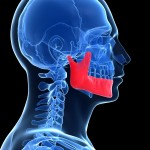
Temporomandibular joint (TMJ) disc displacement without reduction (DDwoR) is thought to occur in 2-8% of patients with temporomandibular disorders. It can cause TMJ pain and restricted opening and is sometimes referred to as ‘closed lock’. A range of treatment have been tried and the aim of this review, was to investigate the effects of different conservative and surgical interventions used in the management of TMJ DDwoR.
Searches were conducted in the Cochrane CENTRAL, Medline, Embase, and Scopus databases. In addition reference lists of review articles, included studies, relevant textbooks and 7 relevant journals were also searched. Randomised and quasi– randomized clinical trials of any form of conservative or surgical intervention were considered. The primary outcomes were TMJ pain intensity and unassisted/active maximum mouth opening (MMO). Study selection, data abstraction and quality assessment was conducted independently by two authors. The Cochrane risk of bias tool was used for the quality assessment.
- 20 studies (including 1305 patients in total) met the inclusion criteria. 12 were considered at high risk of bias and 8 at unclear risk.
- Only 7 studies had an a priori sample size calculation and 8 had inadequate statistical power.
- Summaries of 21 comparisons between a variety of interventions, either between interventions, or between intervention and placebo or no intervention are presented. Meta-analysis were conducted for 4 comparisons on homogenous groups.
The authors concluded
Evidence levels, are currently insufficient for definitive conclusions, because the included studies were too heterogeneous and at an unclear to high risk of bias. In view of the comparable therapeutic effects, paucity of high-quality evidence, and the greater risks and costs associated with more complex interventions, patients with symptomatic DDwoR should be initially treated by the simplest and least invasive intervention.
Comment
The authors have followed a thorough approach in undertaking this review and although there were able to include 20 studies they were not of high quality. There was also a high degree of clinical heterogeneity with a wide range of interventions being delivered with various combinations and techniques. A number of Cochrane reviews of interventions for temporomandibular disorders have also been conducted and the findings are similar, in that there is limited high quality evidence on which to base our clinical interventions. All the review of this area have highlighted the need for high quality randomised controlled trials to be conducted in this are to inform best practice for these patients. Until such time as these are available the authors’ recommendations that, patients with symptomatic DDwoR should be initially treated by the simplest and least invasive intervention seems eminently sensible.
Links
Al-Baghdadi M, Durham J, Araujo-Soares V, Robalino S, Errington L, Steele J. TMJ Disc Displacement without Reduction Management: A Systematic Review. J Dent Res. 2014 Mar 21. [Epub ahead of print] PubMed PMID: 24659775.
Protocol for the review on PROSPERO database
Rigon M, Pereira LM, Bortoluzzi MC, Loguercio AD, Ramos AL, Cardoso JR. Arthroscopy for temporomandibular disorders. Cochrane Database of Systematic Reviews 2011, Issue 5. Art. No.: CD006385. DOI: 10.1002/14651858.CD006385.pub2.
Luther F, Layton S, McDonald F. Orthodontics for treating temporomandibular joint (TMJ) disorders. Cochrane Database of Systematic Reviews 2010, Issue 7. Art. No.: CD006541. DOI: 10.1002/14651858.CD006541.pub2.
Al-Ani MZ, Davies SJ, Gray RJM, Sloan P, Glenny AM. Stabilisation splint therapy for temporomandibular pain dysfunction syndrome. Cochrane Database of Systematic Reviews 2004, Issue 1. Art. No.: CD002778. DOI: 10.1002/14651858.CD002778.pub2.
Guo C, Shi Z, Revington P. Arthrocentesis and lavage for treating temporomandibular joint disorders. Cochrane Database of Systematic Reviews 2009, Issue 4. Art. No.: CD004973. DOI: 10.1002/14651858.CD004973.pub2.
Mujakperuo HR, Watson M, Morrison R, Macfarlane TV. Pharmacological interventions for pain in patients with temporomandibular disorders. Cochrane Database of Systematic Reviews 2010, Issue 10. Art. No.: CD004715. DOI: 10.1002/14651858.CD004715.pub2.
Koh H, Robinson P. Occlusal adjustment for treating and preventing temporomandibular joint disorders. Cochrane Database of Systematic Reviews 2003, Issue 1. Art. No.: CD003812. DOI: 10.1002/14651858.CD003812.
Craane B, De Laat A, Dijkstra PU, Stappaerts K, Stegenga B. Physical therapy for the management of patients with temporomandibular disorders and related pain. (Protocol). Cochrane Database of Systematic Reviews 2006, Issue 1. Art. No.: CD005621. DOI: 10.1002/14651858.CD005621.
Poggio CE, Schmitz JH, Worthington HV, Esposito M. Interventions for myogenous temporomandibular disorder (TMD) patients (Protocol). Cochrane Database of Systematic Reviews 2010, Issue 11. Art. No.: CD008828. DOI: 10.1002/14651858.CD008828.
